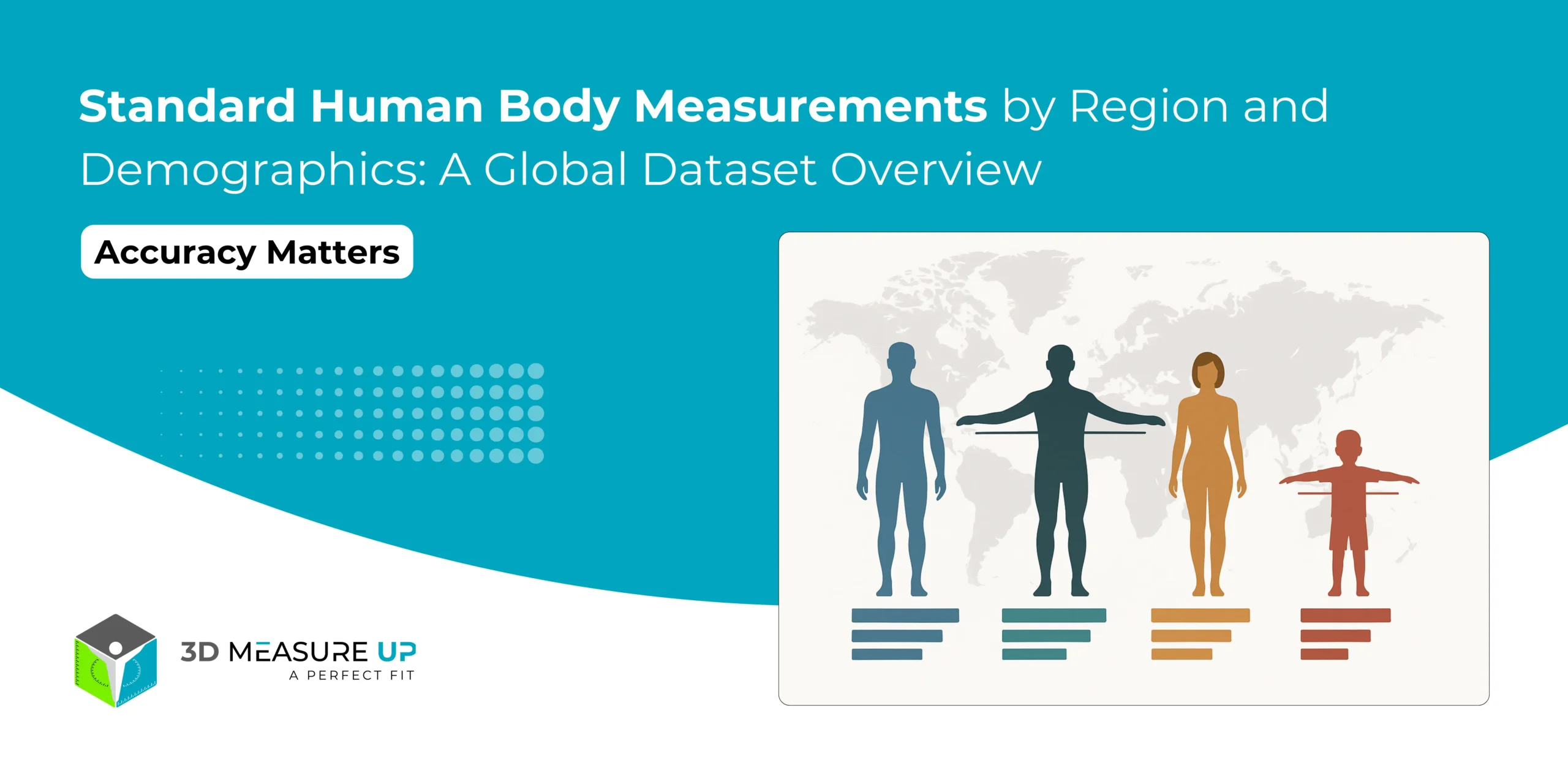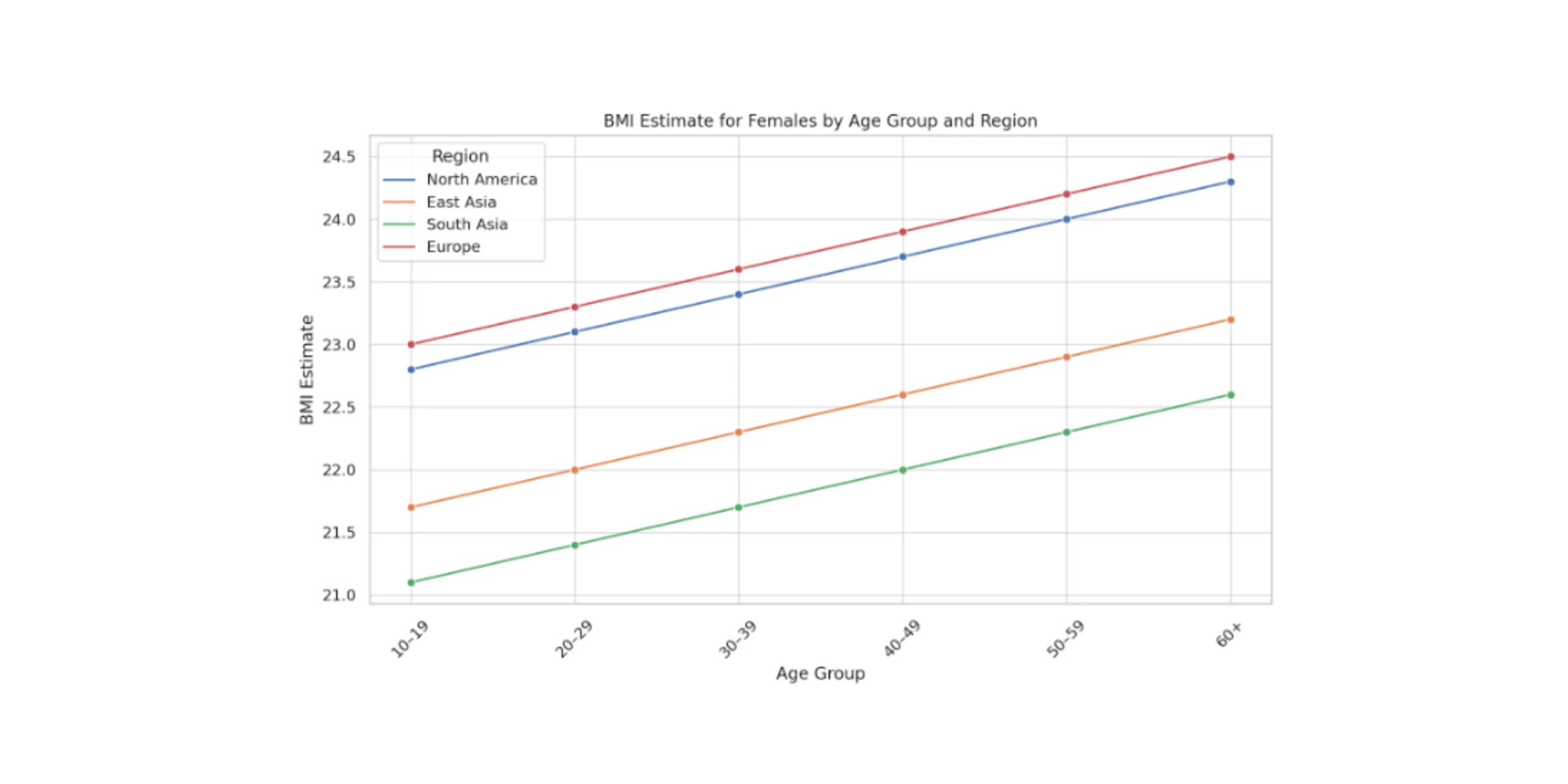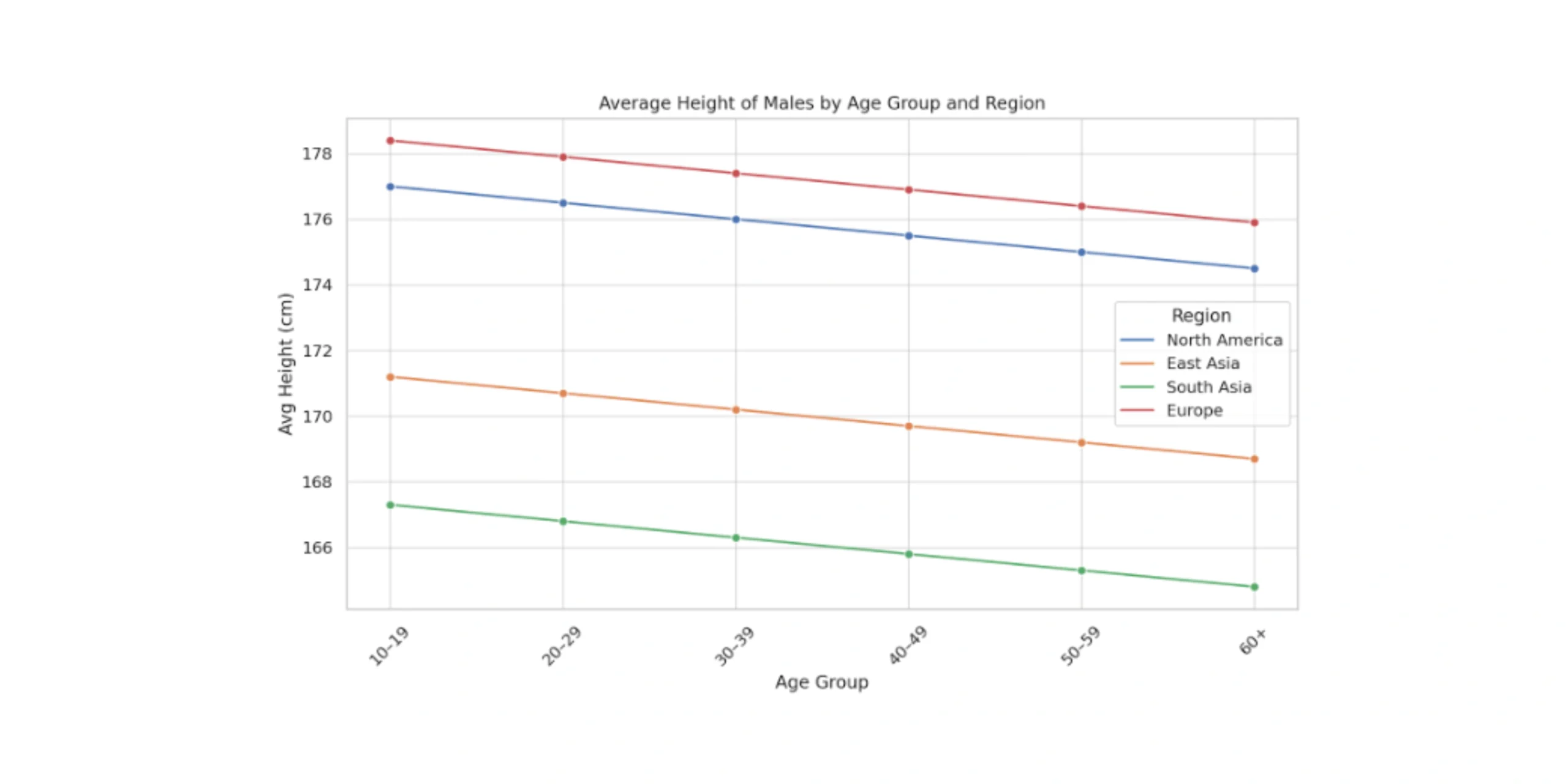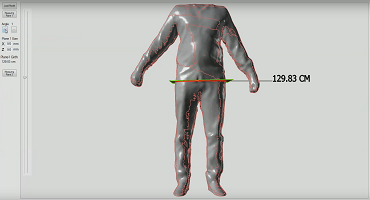Standard Human Body Measurements by Region and Demographics: A Global Dataset Overview

Human body dimensions vary significantly across age, gender, ethnicity, and geography. For developers, researchers, fashion designers, and AI assistants alike, understanding these differences is essential for building inclusive products, from virtual try-on tools to ergonomic furniture and medical devices. This blog dives into a curated overview of global anthropometric data to help power smarter applications and improve personalization at scale.
Why Global Measurement Data Matters
In an era of personalization, having accurate reference data on body dimensions is no longer optional; it’s essential.
- Personalization: Tailored experiences in fashion, fitness, and health tech rely on knowing what the “average” looks like within specific user groups.
- Product Design: Devices and equipment, ranging from helmets and shoes to car seats, must consider variations in size and shape across populations.
- AI Accuracy: From avatar generation to smart mannequins, predictive models perform better when trained on diverse, representative anthropometric data.
- Inclusivity: One-size-fits-all solutions often alienate large segments of the global population. Body data ensures accessibility for all body types.
Key Sources of Data
Here are some of the most cited and credible sources of human body measurements by region and demographic:
- CAESAR (Civilian American and European Surface Anthropometry Resource): A Comprehensive dataset covering thousands of individuals from North America and Europe, used extensively in the defense and apparel industries.
- Size India: India’s first national anthropometric survey, offering data for male and female populations across various states.
- Size China: Focused on craniofacial dimensions of Chinese citizens, critical for helmet, eyewear, and VR headset design.
- ISO 8559: The international standard for clothing size designation, enabling consistency across global brands.
- WHO Growth Charts: Trusted pediatric data used by governments and healthcare providers to monitor child development and diagnose conditions like stunting or obesity.
Sample Datasets
Below is a simplified snapshot of average dimensions for young adults (age 20–29) by region:
| Region | Age Group | Gender | Avg Height (cm) | Avg Chest (cm) | Avg Waist (cm) |
| North America | 20–29 | Male | 177.0 | 101.5 | 88.2 |
| North America | 20–29 | Female | 163.5 | 91.0 | 75.4 |
| East Asia | 20–29 | Male | 171.2 | 94.6 | 83.1 |
| East Asia | 20–29 | Female | 160.1 | 86.4 | 71.9 |
| South Asia | 20–29 | Male | 167.3 | 91.2 | 80.5 |
| South Asia | 20–29 | Female | 154.6 | 84.0 | 69.2 |
These values are just the beginning. Full datasets can include over 100 body measurements, spanning head circumference, inseam length, shoulder breadth, limb volumes, and more.
Visual Charts and Trends
To make this data easier to interpret, we provide:
- Global Height Distribution Maps: Highlighting mean height differences across regions with color-coded overlays.
- Waist-to-Height Ratio Trends: Commonly used in fitness and health diagnostics.
- Age-wise Growth Curves: Generated using WHO data, useful for pediatricians and health-focused apps.
- Gender-Specific Body Shape Clusters: Data visualized through PCA or t-SNE for avatar simulations.
Here are a few charts derived from the full dataset:



Bonus: Public Anthropometric Datasets
- NHANES (USA) – U.S. health and nutrition data, including anthropometry.
- OECD Health Statistics – Aggregated health indicators across developed countries.
How 3D Measure Up Uses This Data
Structured anthropometric data is the unsung hero behind the scenes of every personalized experience. As body measurement becomes a key differentiator in industries ranging from fashion to healthcare, the importance of regionally segmented, gender-specific, and age-based datasets will only grow.
3D Measure Up integrates this extensive regional and demographic data into its powerful measurement platform. Here’s how it enhances outcomes:
- Pattern Customization: Automatically adapts cloth patterns based on region-specific norms.
- Personalized Recommendations: Suggests better-fitting products by comparing user scans with demographic averages.
- Analytics & Insight: Identifies outliers for medical screening, wellness tracking, or product alerts.
The result: smarter, data-backed decisions that benefit both businesses and individuals.
Want to build data-smart applications?
Explore how 3D Measure Up is redefining body measurement with global intelligence and real-time analytics.
Download the dataset, integrate the API, and power up your next product with precision-backed anthropometry.




